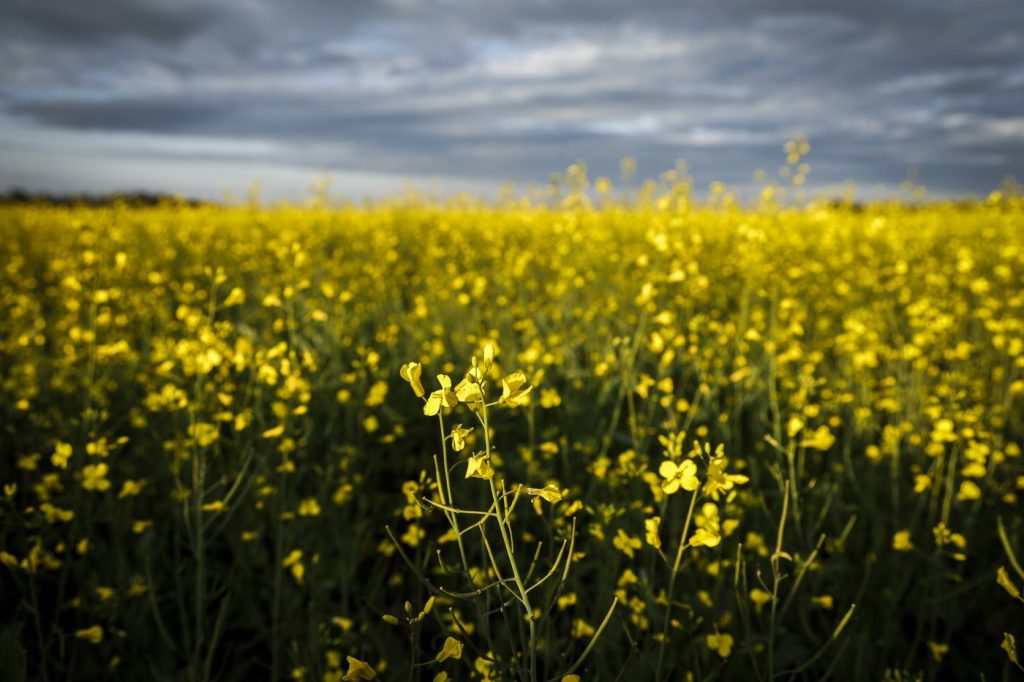CALGARY — Gunter Jochum, a farmer operating west of Winnipeg, has noted significant variability in rainfall across his land this year. Alongside his brother-in-law, Jochum cultivates wheat, canola, oats, and soybeans on 2,500 hectares situated near the Assiniboine River. He highlighted that the scattered summer showers failed to effectively cover entire fields, resulting in uneven crop yields, particularly for oats and wheat. Despite the quality of the crop being excellent, the inconsistency in yields reflects the impact of varying weather conditions.
As of early September, Jochum was in the process of harvesting cereals before moving on to canola and soybeans. However, his optimistic harvest experience has been marred by ongoing trade disputes with China and the U.S., which are two of Canada’s major agricultural markets. Jochum expressed his disappointment over the situation, urging politicians to resolve the tariff disputes that are hindering trade and to invest in transportation infrastructure to facilitate shipment processes. “It’s their job to make sure that the market can do its job as far as trade is concerned,” he stated.
The challenges faced are further underscored by the Saskatchewan government's crop report revealing that only 41 percent of this year’s harvest was complete as of the first week of September, an increase from 23 percent the previous week. This progress is lagging behind previous years, as farmers contend with both rain delays and dry conditions that pose risks of equipment fires. Bill Prybylski, another farmer who grows a variety of crops including canola and wheat, reported a timely harvest and unexpectedly good yields on his farm west of Yorkton, Saskatchewan. However, he acknowledged that certain regions, particularly in the southeast, are experiencing drought, leading to disappointing harvest outcomes.
Prybylski, who also leads the Agricultural Producers Association of Saskatchewan, emphasized that the late rains were insufficient to salvage this season's crops in affected areas. Even for farmers achieving healthy yields, the ongoing trade issues, particularly a 75.8 percent tariff imposed by China on Canadian canola, have dampened their spirits. The Federal Government announced a $370 million biofuel incentive intended to boost competitiveness among canola producers and temporary increases in interest-free advances for farmers, yet Prybylski argues more needs to be done to eliminate the tariffs altogether.
The advance payment structure, while helpful, is seen as a temporary measure that does not address the fundamental problems stemming from reduced market access. Farmers face pressures to sell their crops to manage expenses, particularly as storage conditions become precarious due to limited safe storage time. Carl Potts, executive director of Saskatchewan Pulse Growers, reported average to slightly above-average yields this year, noting that while the harvest may be delayed compared to previous years, it generally indicates better crop conditions.
However, market dynamics remain challenging, with prices for agricultural products, such as yellow peas and lentils, falling significantly since April. Potts described the current scenario as “not just soft,” indicating that the pressure on prices is more substantial than usual during harvest time. Additionally, the wildfire smoke hovering over the Prairies this season has not caused major detriment to the crops, and in some instances, it may have provided protective benefits for blooming plants from excessive heat, according to farmers.
Research scientist Raju Soolanayakanahally raised concerns about the potential impacts of smoke on crop quality and suggested that more resources are needed to investigate these effects, particularly for widely utilized products like canola oil. He highlighted the complexities of how smoke interacts with plant development, underscoring the importance of understanding these interactions further.










